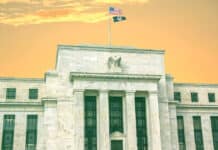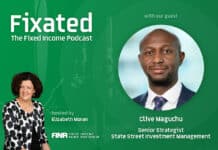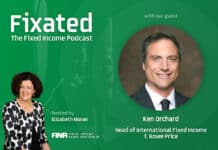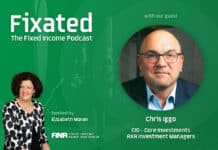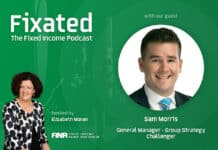
The U.S. economic outlook has improved in recent weeks. But, with U.S. stocks selling at historically expensive valuations, we think high yield bonds may offer an attractive alternative.
As recently as May 1, participants on Polymarket—an investor prediction market—saw a 65% chance that the U.S. economy would fall into recession in 2025. But, since then, the Trump administration appears to have taken its most severe tariff scenarios off the table.
Additionally, as President Trump’s “One Big Beautiful” tax bill nears finalization in Congress, it has become clear that fiscal austerity will not be a priority. Polymarket now sees only a 26% chance of a U.S. recession this year.
But economic growth expectations have not improved significantly since early May. As of late June, the consensus view in the Bloomberg Survey of Economists was that U.S. gross domestic product would rise only 1.4% in 2025. Sluggish U.S. growth appears likely for several reasons.
- Even without more extreme scenarios, the Trump tariffs almost certainly will have a negative impact.
- The level of fiscal stimulus provided by the tax bill is likely to be relatively modest.
- The U.S. housing market remains burdened by high mortgage rates.
Despite this modest growth consensus, the S&P 500 Index is expensive and U.S. earnings estimates remain extremely optimistic. As of June 24, S&P 500 earnings per share were projected to grow 11.1% over the next 12 months, despite rising only 9.2% over the previous 12 months.
Also read: Global Private Credit to Move From ‘Niche’ To Necessity
The earnings multiple placed on those estimates is also quite elevated. As of June 24, the S&P 500 was priced at 21.6 times expected next‑12‑month earnings. This was near the highest level reached during the past 20 years.
High yield bonds may be an attractive alternative
High yield bonds are a possible alternative for investors seeking attractive return potential but less downside exposure.
While high yield bonds are unlikely to keep pace with stocks if U.S. economic growth proves surprisingly robust, they currently feature very attractive yields relative to recent history—both on an absolute basis and relative to stocks.
As of June 24, the Bloomberg U.S. Corporate High Yield Bond Index offered a 7.3% yield to worst—a measure that takes into account potential call dates and other provisions that could reduce returns to investors. This was considerably higher than the 4.6% earnings yield on the S&P 500. Such an unusually large yield gap is rarely seen outside of periods of significant economic distress.
Even if we eliminate the influence of the mega‑cap technology stocks commonly known as the Magnificent Seven, the S&P 500 earnings yield was still only 5.3%.
Moreover, if a surprisingly negative economic scenario were to unfold, high yield bonds could pose less downside risk than U.S. stocks. Over the 30 years ended May 31, 2025, the Bloomberg U.S. Corporate High Yield Bond Index experienced only 36% of the loss on the S&P 500 in months when S&P returns were negative.
Conclusion
The upside potential for U.S. stocks could be limited given that high price‑to‑earnings multiples are being awarded to very optimistic earnings projections. But U.S. high yield bonds currently offer yields averaging above 7% and over the past 30 years have experienced only a bit more than one‑third of the downside of stocks, based on our analysis.
The T. Rowe Price Asset Allocation Committee currently has an underweight position in U.S. stocks but an overweight position in high yield bonds. We believe this combination potentially offers a more attractive risk/return trade‑off over the near term.










